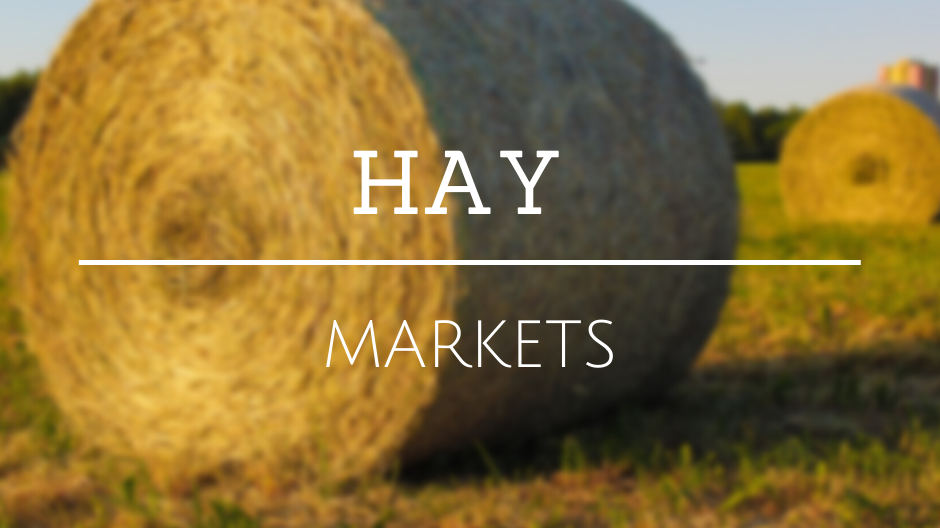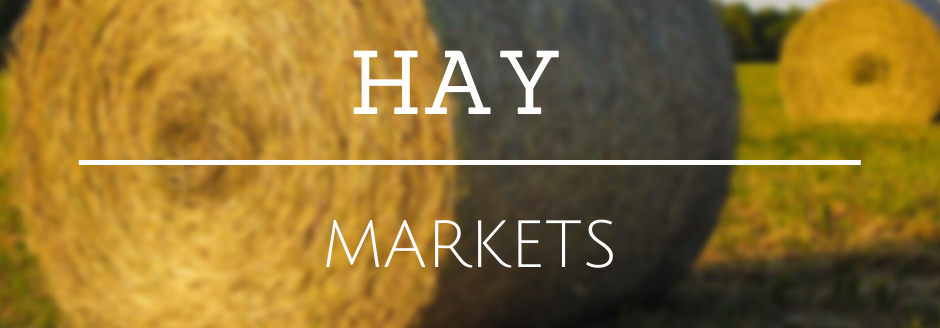State-by-state hay summary

Colorado—In the Feb. 8 report, compared to last report, trade activity light on moderate demand. Retail and stable hay sold mostly steady with a couple of instances of $0.50 cents/bale higher.
Missouri—In the Feb. 8 report, compared to last report, the supply of hay is light to moderate, demand is moderate to good, and prices mostly steady. Warmer temperatures have been a welcome relief but have come at the cost of a lot of mud around. Hay movement has been good as several farmers used much more hay in January than they really wanted to, and it is still a while before there will be any grass even with the recent warm up and most know that there will still be more winter before spring turn out.
Nebraska—In the Feb. 8 report, compared to last report, alfalfa and grass hay sold steady. Ground and delivered hay and alfalfa pellets steady. Demand was mostly light to instances moderate on round and large squares with good demand for small square bales. Not really a lot of interest from prospective buyers as of now. Many sellers thought the snow would make a difference and buyers would be knocking the door down for a load of hay. That hasn’t been the case this year.
Oklahoma—In the Feb. 2 report, compared to the last report, demand still remains low. Even with the overall total hay bought and sold was up a little, with most producers reporting that they are still not trading much hay, with most trades being to previous clients. Prices are still holding strong to good quality hay. Next report will be released Feb. 16.
Texas—In the Feb. 9 report, hay prices are mostly steady. Hay is getting more scarce to come by, but buyer demand hasn’t been as prominent this year due to a milder winter in all regions. The milder winter coupled with some timely moisture has aloud winter grazing to sustain producers in some regions longer this year, allowing them to feed less. First cutting of hay in the south will usually be marketed by the end of March or first of April. Next report will be released Feb. 23.
South Dakota—In the Feb. 9 report, compared to last report, alfalfa hay was steady to weak. Moderate demand for dairy quality alfalfa as low milk prices are pressuring margins for dairy operators causing them to cut cost where they can. Good demand for grass hay and for corn stalks. Very muddy ground conditions as the temps stay above freezing, even overnight, causing the snows to be basically gone now. Livestock producers are having to bed heavily trying to keep their livestock dry as it is so muddy. More seasonal weather next week, at least below freezing point overnight. Very little sunshine and persistent fog has added to the wet, muddy conditions.
New Mexico—In the Nov. 24, 2023 report, compared to last report, alfalfa hay steady. Trade active, demand good. The the state is 73% complete with fifth cutting, 54% with sixth cutting. Most parts of the state are wrapping up harvest for the season. According to New Mexico Crop Progress report as of Nov. 12, 2023. Hay and roughage supplies improved slightly from the previous week but remained in worse condition than prior years. Hay and roughage supplies were observed to be 25% very short, 42% short, 30% adequate, and 3% surplus. At 14% very short, 37% short, 45% adequate, and 4% surplus, stock water supplies were on par with the 5-year average. This is the last report for the season, reports will resume in spring 2024.
Wyoming—In the Feb. 8 report, compared to last report, hay sold steady on a thin test. Demand was light. Most contacts still have ample tons of hay sitting in hay sheds, tarped or outside waiting for someone to call and purchase their inventory. Some locals continue to purchase some hay on a weekly basis. With the sell off beef cows across the state the last couple of years has taken many mouths off the winter feeding needs so cattlemen haven’t needed much hay to buy. Every year has been different and this one is rather odd in the limited hay that has been sold from the 2023 hay crop.
Montana—In the Feb. 9 report, compared to last report, hay sold fully steady. Hay sales were light this week and demand for hay was light. Many producers report interest was lighter this week compared to last as rain and snow fell across a wide swath of the state, which helped improve drought conditions slightly according to the drought monitor. High quality, high test hay is very scarce and dairies continue to look for high test for immediate use. Canada remained in the market this week with a few loads destined for cattle operations. Most of the hay purchased to ship to Canada was green, but untested feeder hay. Rancher to rancher sales have slowed as many have decided to keep hay instead of selling. The best demand for feeder quality (utility and fair) hay is around $150/ton delivered. Many producers seem content with having some carry over as many are watching the weather very closely. Demand for straw is light as heavy straw supplies continue to be seen especially in the northern portion of the state. Asking prices for straw are running $40-$50/ton for many producers, however limited movement has been seen.



